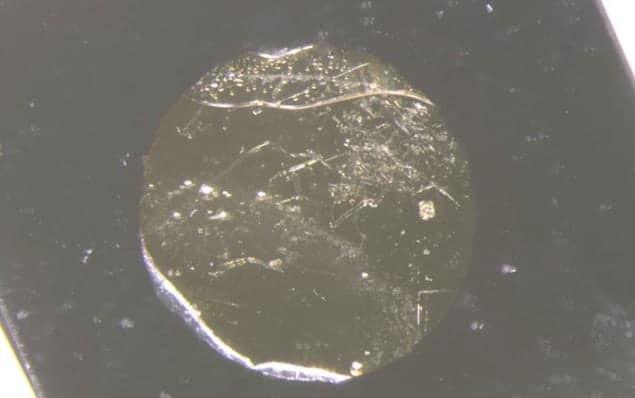
The transformation of water freezing into an exotic type of ice has been directly observed for the first time by researchers in the US.
Most of the ice on Earth has a hexagonal crystal structure, but water can transform into more than 15 types of ice, each with a different molecular arrangement. These rare frozen phases require non-atmospheric pressures and controlled temperature environments to form, so can only be produced on Earth in laboratory experiments.
One exotic type is ice VII – a cubic crystal phase that can form at high pressure and high temperature. It is thought that this “hot ice” could be found on the ocean floor of Saturn’s moon Titan and other watery exoplanets. Back on Earth, however, it is difficult to create and maintain ice VII in a lab. Previous studies have attempted to “shock freeze” water using lasers to create pressure changes, but they have not been able to measure its rapid formation or characterize its structure.
Popular topic
“There have been a tremendous number of studies on ice because everyone wants to understand its behaviour,” says team member Wendy Mao from Stanford University. “What our new study demonstrates, and which hasn’t been done before, is the ability to see the ice structure form in real time.”
To create ice VII, the team fire an intense laser at a sample of water sandwiched between a diamond platelet coated with gold and a quartz platelet. The laser light vapourizes the diamond, generating a huge pressure shock 50,000 imes greater than that of Earth’s atmosphere at sea level. The force triggers the phase change to ice VII, with the transformation happening in only 6 ns.
Mao and colleagues recorded the fast phase change with femtosecond-long X-ray pulses generated by the X-ray Free Electron Laser at SLAC’s Linac Coherent Light Source. The X-rays are diffracted by the transforming water, allowing the researchers to characterize the changing molecular structure.
Disorder to order
“These experiments with water are the first of their kind, allowing us to witness a fundamental disorder-to-order transition in one of the most abundant molecules in the universe,” says team member Arianna Gleason. “Learning about the icy interiors [of icy satellites and planets] will help us understand how the worlds in our solar system formed and how at least one of them, so far as we know, came to have all the necessary characteristics for life.”
The work is presented in Physical Review Letters.



